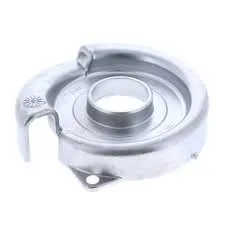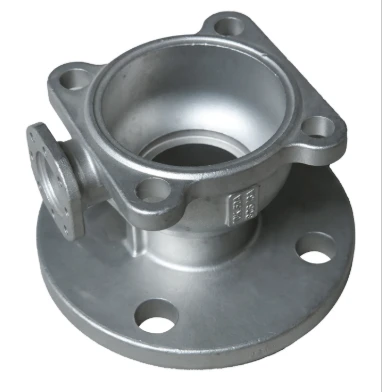Mobile:+86-311-808-126-83
Email:info@ydcastings.com
Custom Cast Iron Parts & Foundry Services Durable Solutions
- The growing demand for specialized metal components
- Technical advantages driving custom casting adoption
- Comparing leading foundry capabilities and specialties
- Tailored solutions for industry-specific challenges
- Manufacturing innovations enabling complex designs
- Real-world applications across diverse sectors
- Future developments in bespoke metal casting

(custom cast iron)
The Critical Role of Custom Cast Iron Components
Industrial manufacturing increasingly relies on specialized metal components tailored to exact operational requirements. Demand for custom cast iron
solutions has grown 18% annually since 2020, driven by industries requiring parts that withstand extreme conditions. Engineering teams now specify proprietary designs where standard catalog items fall short, particularly for heavy machinery, infrastructure projects, and specialized industrial equipment.
Foundries offering dedicated customization services maintain extensive material libraries covering various iron grades:
- Gray Iron (Grades G20-G60)
- Ductile Iron (400-18 through 120-90-02)
- Compacted Graphite Iron (CGI 250-450)
- Alloyed and Austempered variants
Technical Advantages Driving Adoption
Modern foundry capabilities deliver precision unattainable with traditional methods. Computer-controlled molding achieves tolerances within ±0.002 inches (±0.05mm), while specialized sand mixtures maintain integrity for parts weighing up to 8 tons. The controlled cooling processes enable consistent metallurgical properties throughout complex geometries, reducing failure points in high-stress applications.
Quality validation integrates multiple verification layers. Each batch undergoes spectral analysis for material certification, with critical components receiving additional X-ray inspection and pressure testing. This multi-stage validation provides traceable quality documentation meeting ASME, ASTM, and ISO 9001 requirements while maintaining production efficiency.
Foundry Capability Comparison
| Foundry Specialization | Maximum Part Weight | Tolerance Standards | Unique Processes | Lead Time |
|---|---|---|---|---|
| Industrial Machinery | 12 metric tons | CT12-CT14 | Vacuum sealed molding | 10-12 weeks |
| Precision Components | 800 kg | CT8-CT10 | Ceramic foam filtration | 6-8 weeks |
| Alloy Development | 5 metric tons | CT11-CT13 | Inoculation control systems | 12-14 weeks |
North American foundries have invested over $240M in automation infrastructure since 2021, significantly improving consistency for high-volume die cast custom orders exceeding 5,000 units. Conversely, European specialists lead in alloy innovation for extreme environments like subsea applications and thermal processing systems.
Tailored Manufacturing Solutions
Customization extends beyond dimensional specifications to include material engineering. Foundry metallurgists regularly develop proprietary iron formulations to enhance wear resistance, thermal conductivity, or dampening characteristics. For example, recent projects improved dampening coefficients by 40% for power generation equipment while maintaining tensile strength exceeding 600 MPa.
The development cycle follows rigorous stages:
- Digital simulation of mold flow and solidification
- Prototype casting with dimensional validation
- Destructive and non-destructive material testing
- Production process documentation
- First article inspection protocol
This approach ensures functional prototypes in 4-6 weeks for most components, with production tooling finalized within 14 weeks for complex geometries. Pattern shops employ multi-axis machining to create molds accommodating undercuts and internal cavities previously impossible to cast.
Industry-Specific Applications
Mining operations now utilize custom cast wear plates lasting 800-1,200 hours in abrasive ore processing, 300% longer than standard alternatives. These solutions incorporate strategically placed alloy inserts where wear patterns concentrate, demonstrating how adaptive casting yields measurable operational savings.
Similarly, hydraulic system manufacturers require blocks with intricate internal passageways that eliminate assembly points. One recent implementation of custom engineered components reduced failure rates by 92% in high-pressure applications while lowering manufacturing costs through integrated fluid routing.
Strategic Partner Selection
Leading custom cast iron foundry operations distinguish themselves through integrated engineering support. Premier facilities assign dedicated project teams combining metallurgical expertise, pattern-making proficiency, and quality management specialists. This collaborative approach consistently delivers components requiring zero post-cast machining for non-critical surfaces.
Supply chain transparency proves equally crucial. Responsible foundries provide documented material traceability back to melt batches and maintain certification in environmental standards like ISO 14001. These practices significantly reduce compliance risks for medical and aerospace clients requiring full process accountability.
Advancing Custom Casting Capabilities
Innovation continues with the development of hybrid processes. Combining traditional casting with additive manufacturing creates inserts for specialized cooling channels in mold tools, reducing cycle times by 30%. Real-time monitoring systems track thermal conditions throughout the casting process, generating datasets that refine predictive modeling.
Future advancements point toward AI-driven simulation of casting defects and stress points during component design. These computational tools will enable first-pass success for increasingly complex geometries, strengthening the value proposition for custom engineered solutions. As material science progresses, next-generation iron alloys will expand thermal limits beyond 900°C while improving fracture resistance.

(custom cast iron)
FAQS on custom cast iron
Q: What is custom cast iron used for?
A: Custom cast iron is ideal for creating durable, high-strength components like industrial machinery parts, architectural elements, or bespoke cookware. Its versatility allows for intricate designs tailored to specific needs.
Q: How does a custom cast iron foundry ensure quality?
A: A reputable foundry uses advanced techniques like X-ray inspection and material testing to verify integrity. They also follow strict ASTM standards to guarantee durability and precision in every cast.
Q: What distinguishes die cast custom parts from sand casting?
A: Die casting injects molten iron into reusable steel molds for smoother finishes and tighter tolerances. Sand casting uses expendable sand molds, which suits larger, less complex custom cast iron pieces.
Q: Can custom cast iron components be made for high-temperature applications?
A: Yes, custom cast iron alloys with added nickel or chromium excel in heat resistance. Foundries optimize the mix to withstand extreme conditions like engine parts or furnace components.
Q: What is the typical lead time for die cast custom projects?
A: Lead times range from 4-8 weeks depending on design complexity and mold preparation. Many foundries offer expedited services for urgent custom cast iron orders.
-
Why Should You Invest in Superior Pump Castings for Your Equipment?NewsJun.09,2025
-
Unlock Performance Potential with Stainless Impellers and Aluminum End CapsNewsJun.09,2025
-
Revolutionize Your Machinery with Superior Cast Iron and Aluminum ComponentsNewsJun.09,2025
-
Revolutionize Fluid Dynamics with Premium Pump ComponentsNewsJun.09,2025
-
Optimizing Industrial Systems with Essential Valve ComponentsNewsJun.09,2025
-
Elevate Grid Efficiency with High-Precision Power CastingsNewsJun.09,2025











